How we kicked BP out of the British Museum
- Text by Francesca Willow
- Photography by Anna Branthwaite
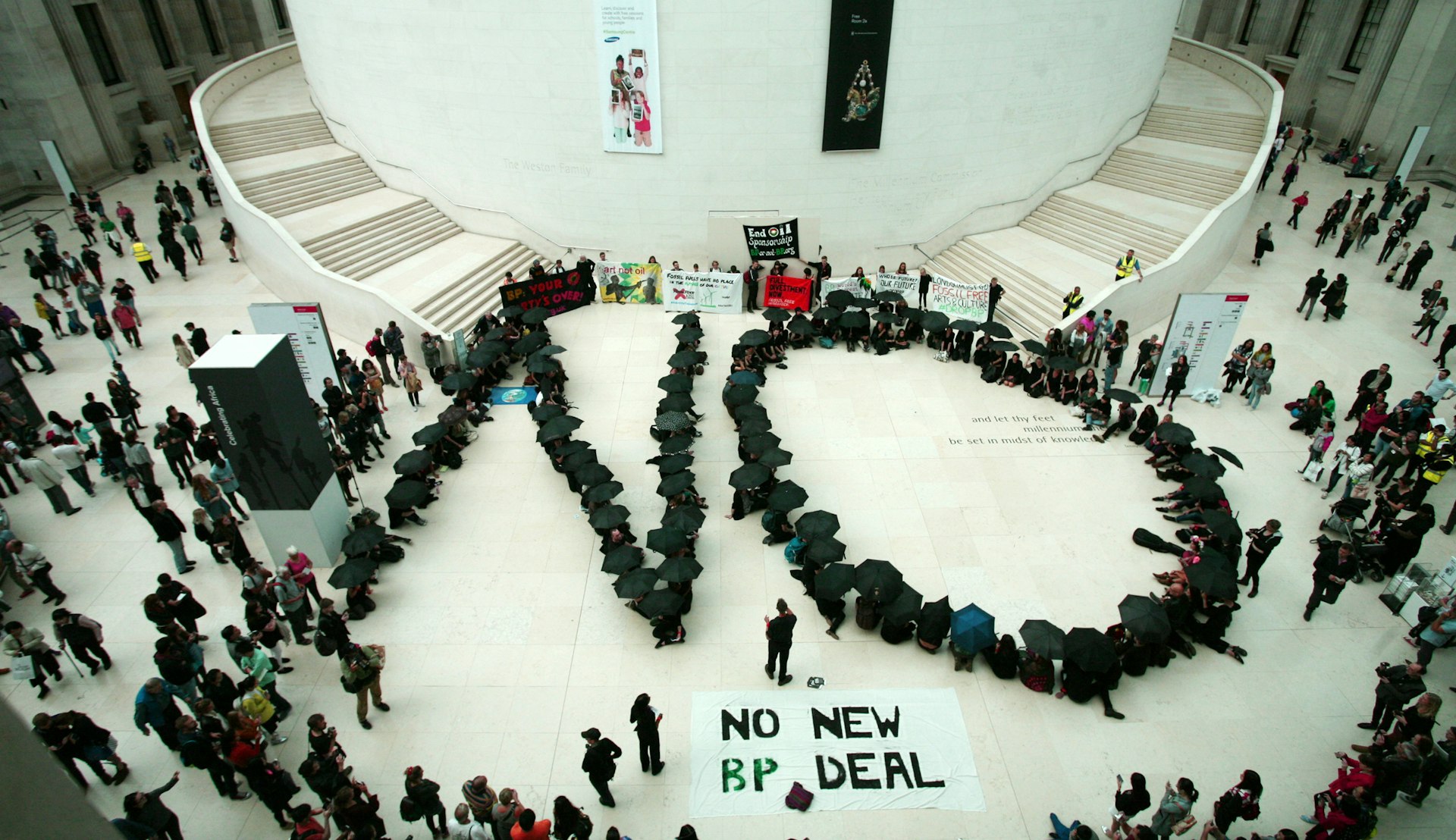
In 2012, The Royal Shakespeare Company launched a series of plays sponsored by the oil giant BP. In response, a small group of actor-vists began invading the RSC stage with rebel performances before the plays began: lively skits in a Shakespearean style, highlighting serious issues with BP sponsorship. These first BP or not BP? performances (or Reclaim Shakespeare Company, as we were known back then) culminated in a Shakespearean flashmob at the BP-sponsored Shakespeare: Staging the World exhibition at the British Museum, featuring hundreds of people.
Eleven years later, we have held almost 70 protest performances in 11 different oil-sponsored institutions – all of whom (except the Science Museum) have now parted ways with their sponsors.
We have always been satirical and coordinated, smuggling in anything from a pop-up Viking longship to a giant kraken that could be dismantled and stuffed under our clothes. There were times when we were outrageous, wheeling a four-metre-high Trojan horse into the forecourt of the British Museum and bringing over 1500 activists to the museum to protest, chant and sing against the institution's BP sponsorship deal. Every action creatively responded to an array of BP-branded exhibitions (some of which felt almost too on the nose: Sunken Cities anyone?!) but our resounding message was clear: we weren’t going anywhere.
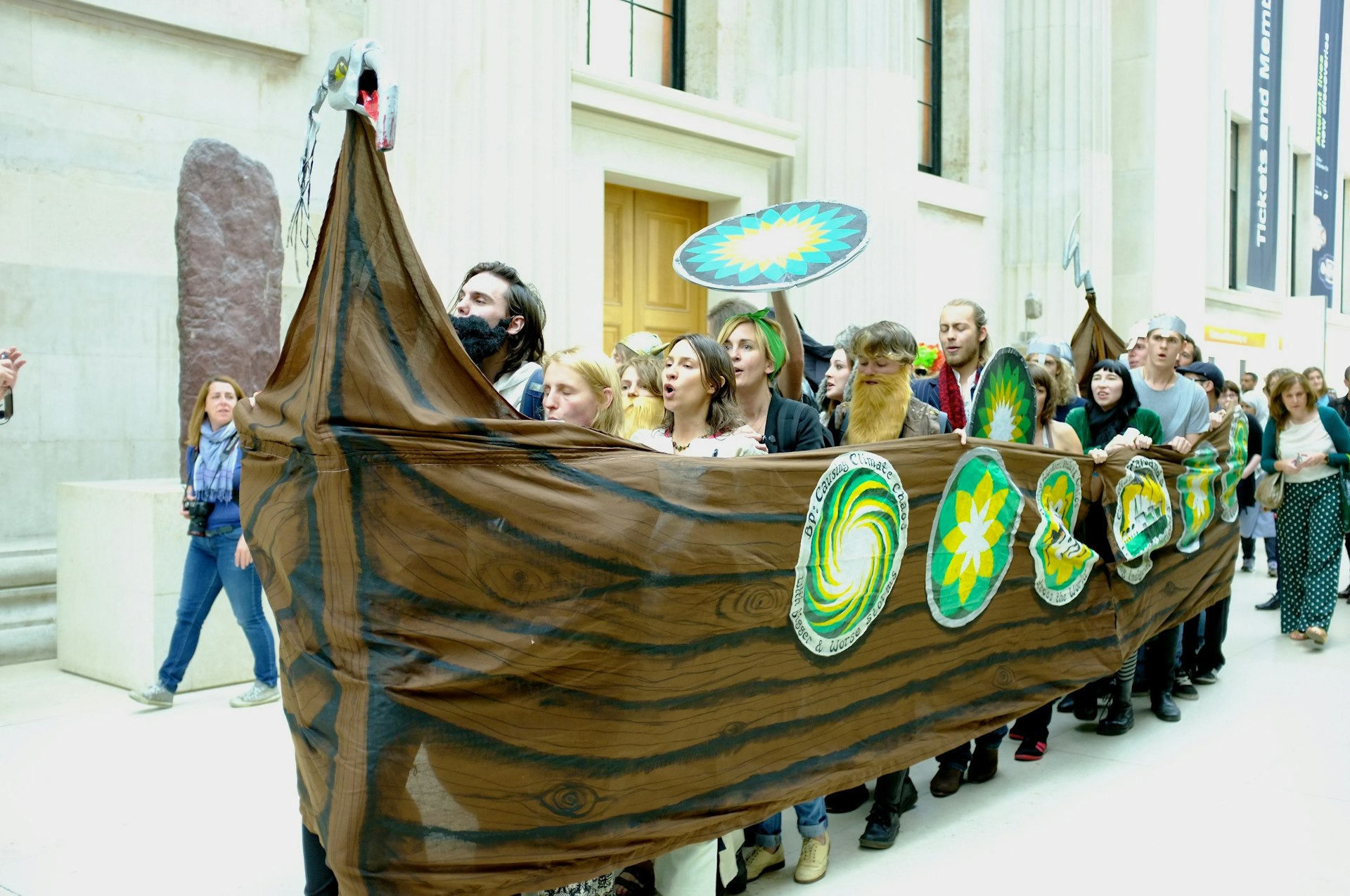
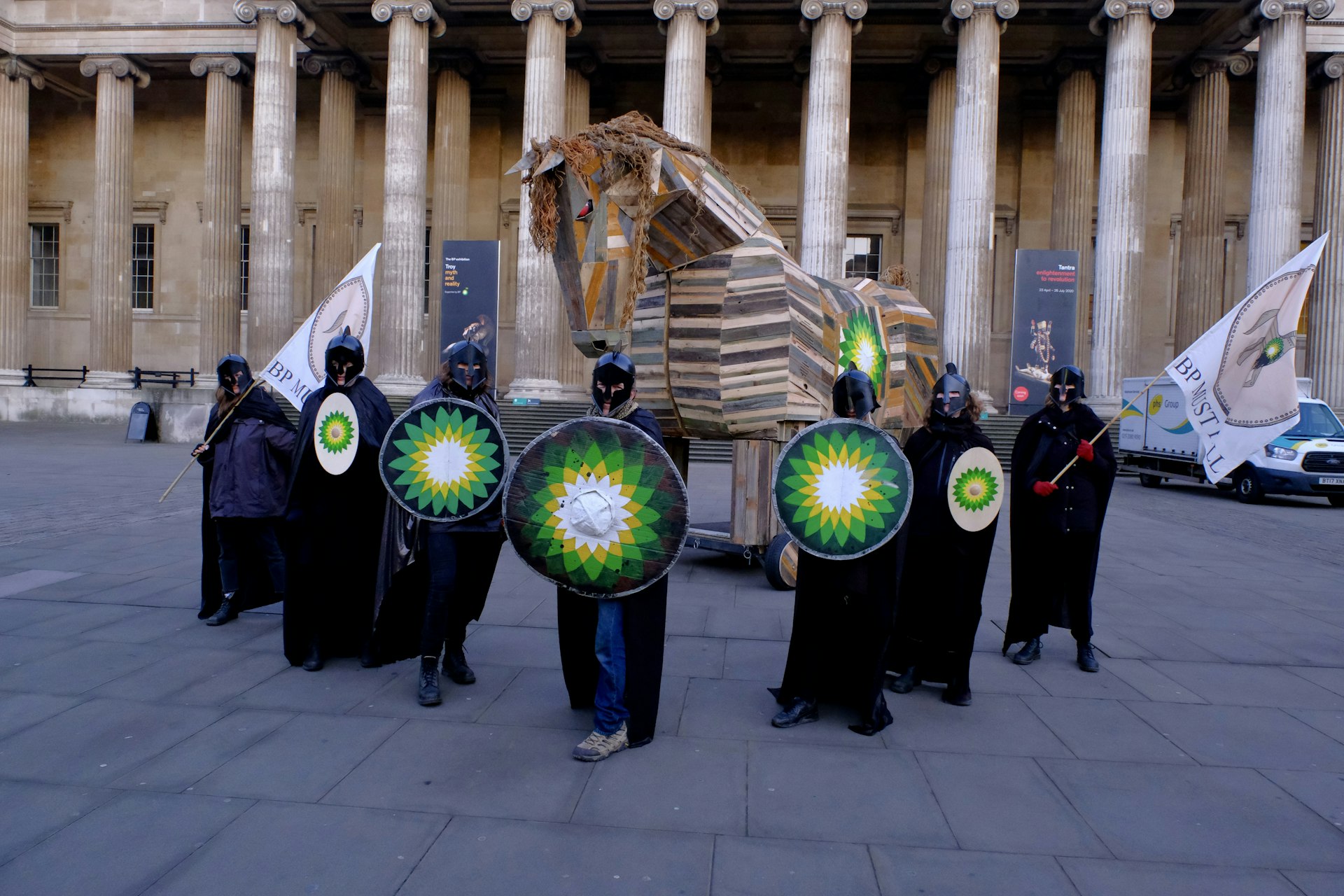

It’s the British Museum that we kept coming back to the most. It was the toughest nut to crack, the jewel in BP’s sponsorship crown, and a space where we could draw powerful connections between oil sponsorship, colonialism and workers’ rights. BP sponsorship comprised less than 0.5% of the museum’s income at £375,000 per year. In comparison, BP spent over £800,000 on social media adverts in 2022 alone. They walked away from a promised 40% production cut, continuing to pursue extraction while spouting vague ‘net zero’ promises. Through it all the British Museum stood behind them. They backed BP and gave it legitimacy while it partnered with repressive governments, spilled oil into the Gulf of Mexico and poured billions of dollars into extracting new oil and gas. They ignored their own workers when the PCS union passed motions to remove oil sponsorship, and their own trustees when one stepped down over the issue. The museum management refused to listen, dragging their feet and continuing their colonial legacy by supporting harmful extraction in the Global South, all the while refusing to return stolen objects or pay workers fairly.
BP used its 27-year sponsorship of the British Museum to help deflect attention from its pollution, lobbying and backing of climate disinformation. To combat these kinds of deeply entrenched relationships, we found certain priorities were vital to our art activism.

The first was to foster a culture of solidarity with frontline communities that are most harmed by both BP and the British Museum. In the ‘Stolen Goods’ tours of 2018 and 2019, we supported a series of speakers who challenged the museum to return stolen objects from Indigenous Australia, Iraq, Palestine, the Pacific Islands and Greece, and demanded an end to BP sponsorship. In 2020 we joined a day of action called by Gwich’in and Iñupiaq-led Indigenous groups in Alaska demanding an end to Arctic drilling, which BP has pursued for over 60 years.
Other campaigns we partnered with included the Free West Papua Campaign, Observatorio Petrolero Sur (Argentina), COSPACC/Congreso de los Pueblos (Colombia), Save our Songlines (Australia), the Dakota Access Pipeline Resistance, London Mexico Solidarity, the campaign for Gilberto Torres, a Colombian trade unionist who was kidnapped and tortured for standing up to oil companies, and Rodney Kelly, whose ancestor’s stolen shield still remains in the museum today. These partnerships were necessary from a moral perspective, and also helped to build the campaign beyond the usual UK environmentalist circles.
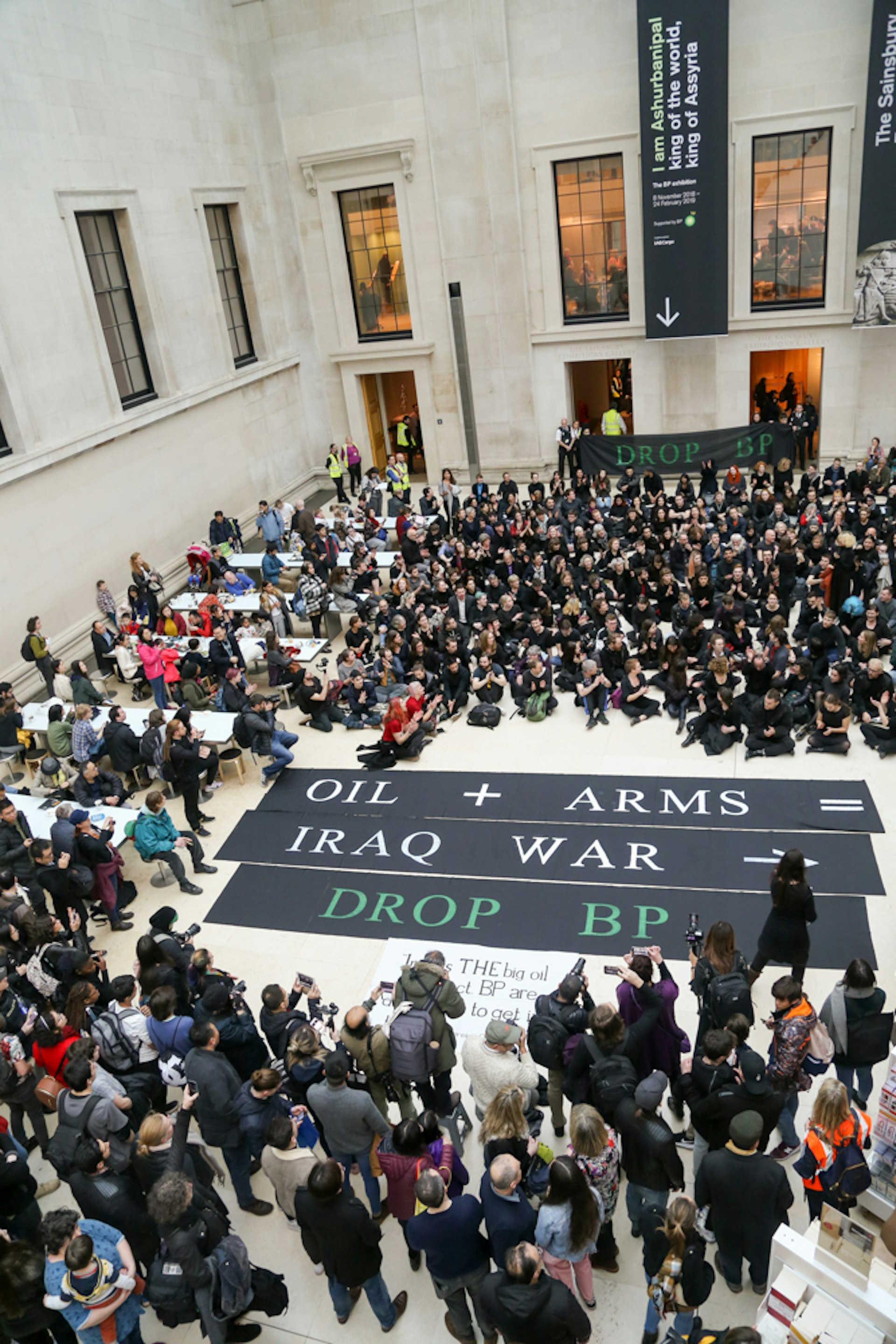
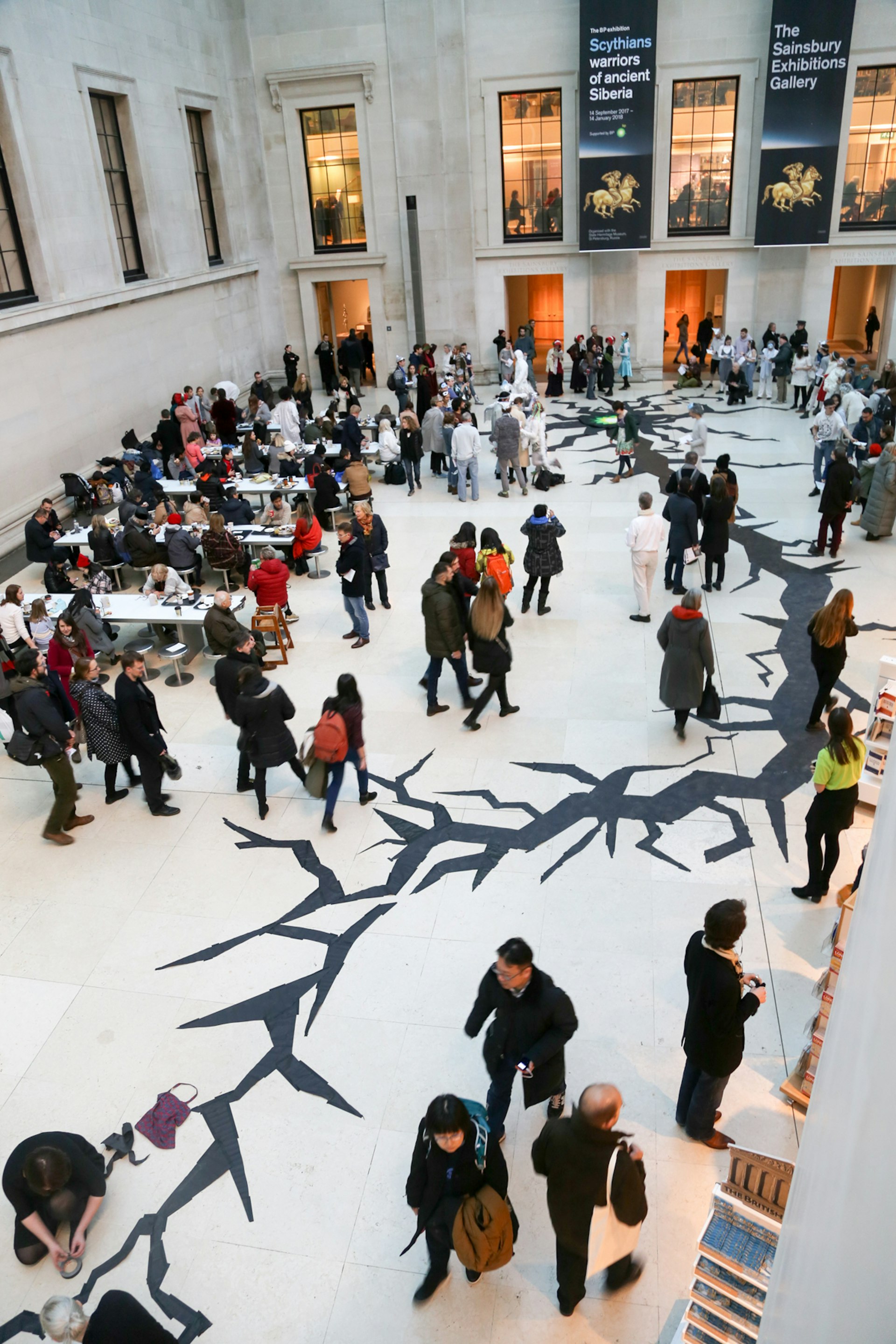
The second priority was to know our audience. Museum-goers and cultural audiences don’t enter these spaces as pro-BP representatives; they come because they’re interested in the exhibitions and shows. Perhaps they’ve never thought to question a sponsorship that’s been around for so long or wonder why that might be unethical, and our work could do that while also challenging the institution’s management. By keeping our actions creative, visually impressive and interactive as well as disruptive, we often garnered supportive audiences who agreed with our message, and wanted to be able to engage with culture without co-signing on unethical choices from management. This sustained support helped shift the narrative and turn the tide of public support, leading to what is now a near-wholesale rejection of fossil fuel funding from the cultural sector. Institutions have realised it’s not what their audiences want, and BP have realised they will always get pushback when they try to artwash the severe harm they cause.
This leads on to the final point: persistence. These campaigns haven’t been won overnight, but we have seen staggering changes in the last decade. The British Museum now joins over 14 institutions that have dropped fossil fuel funding, including the Royal Opera House, National Portrait Gallery, BFI, Tate and, of course, the Royal Shakespeare Company. All of these wins were achieved by the determination to keep coming back with direct action until management was forced to listen. It’s only through the resolution and resilience of many, many people that these wins could be achieved.
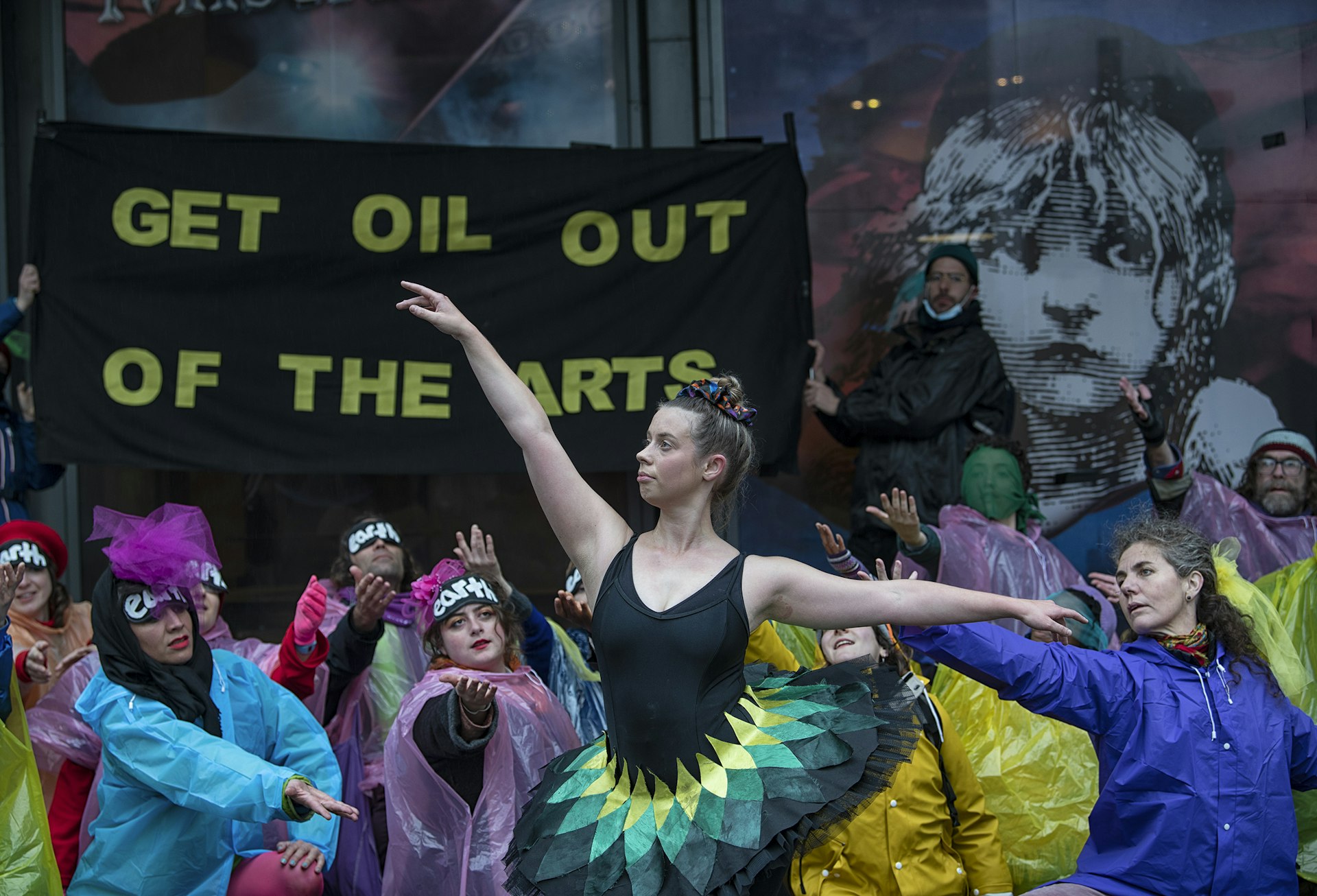
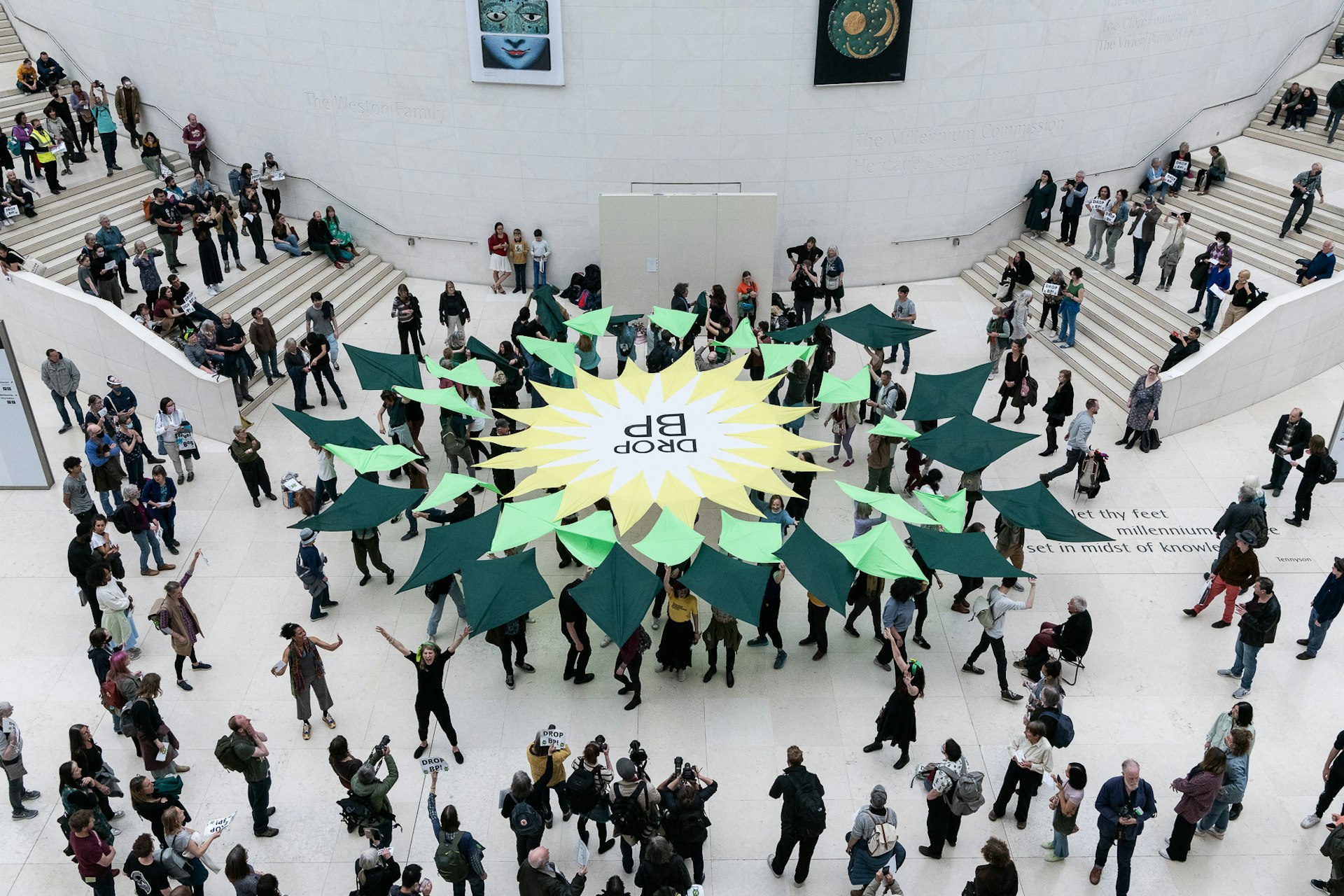
There is still more to be done. The British Museum must now remove BP’s toxic name from its lecture theatre, and listen to calls for global repatriation. But this is a major win after tireless work from countless climate activists, culture campaigners, arts workers, youth strikers, frontline groups and the wider Art not Oil coalition.
This seismic shift should be seen as a wake-up call for cultural organisations still partnering with fossil fuel companies, in particular the Science Museum as it maintains its completely isolated endorsement of BP, Equinor and coal-giant Adani. The museum’s own website states that we must act now to avoid ‘severe and irreversible impacts’ of the climate crisis, but it hasn’t seemed to grasp that cutting ties with giant fossil fuel companies is an obvious first step. It's time for museum management to read up on the science themselves and show these sponsors the door.
Though we’re not quite done with the British Museum just yet, we find ourselves with a lot more time on our hands since they dropped BP, so you never know where we might go next…
Follow BP or not BP on Twitter.
Latest on Huck

Inside the world’s only inhabited art gallery
The MAAM Metropoliz — Since gaining official acceptance, a former salami factory turned art squat has become a fully-fledged museum. Its existence has provided secure housing to a community who would have struggled to find it otherwise.
Written by: Gaia Neiman

Ideas were everything to David Lynch
Dreamweaver — On Thursday, January 16, one of the world’s greatest filmmakers passed away at the age of 78. To commemorate his legacy, we are publishing a feature exploring his singular creative vision and collaborative style online for the first time.
Written by: Daniel Dylan Wray

“The world always shuns”: Moonchild Sanelly on her new album, underground scenes and abortion rights
Huck’s January interview — Ahead of ‘Full Moon’, her most vulnerable project yet, we caught up with the South African pop star to hear about opening up in her music, confronting her past and her fears for women’s rights in 2025.
Written by: Isaac Muk

Krept & Konan are opening an “inclusive” supermarket
Saveways — With 15,000 sq. ft of space and produce from across the world, the store will cater to Black, Asian and ethnic communities in Croydon.
Written by: Isaac Muk

This erotic zine dismantles LGBTQ+ respectability politics
Zine Scene — Created by Megan Wallace and Jack Rowe, PULP is a new print publication that embraces the diverse and messy, yet pleasurable multitudes that sex and desire can take.
Written by: Isaac Muk

As Tbilisi’s famed nightclubs reawaken, a murky future awaits
Spaces Between the Beats — Since Georgia’s ruling party suspended plans for EU accession, protests have continued in the capital, with nightclubs shutting in solidarity. Victor Swezey reported on their New Year’s Eve reopening, finding a mix of anxiety, catharsis and defiance.
Written by: Victor Swezey